Two-phase Flow
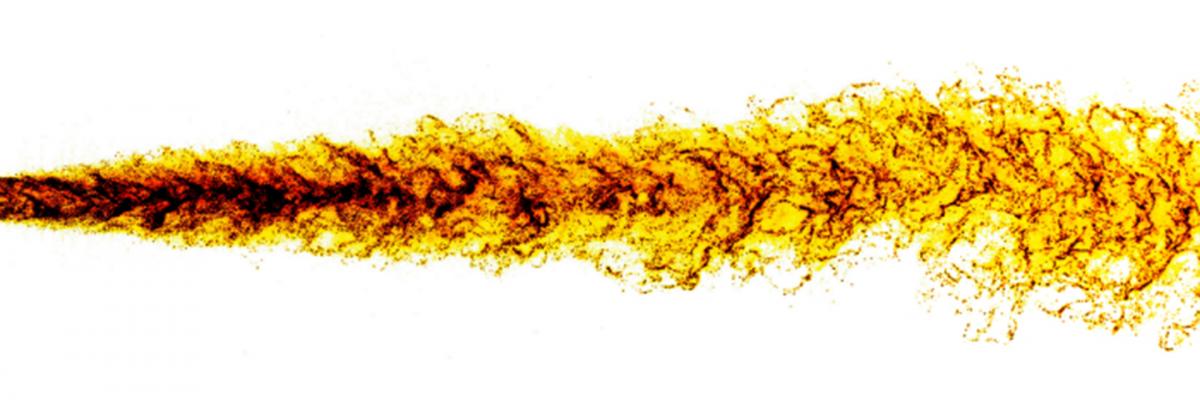
The two-phase flow research group aims to improve our current understanding of the interaction between particles (or droplets) and the surrounding fluid through the collaborative use of detailed experimental measurements, advanced numerical simulations and rigorous data analysis.
The development on an enhanced understanding of particle-laden flows is particular relevant as it holds the promise for improvements in a range of industrial applications, including energy generation, mineral processing and pollutant/contaminant dispersion systems.
The two-phase research group is continually looking for potential industrial/research collaborators, as well as potential PhD. students, both locally and globally. If you would like to discuss potential collaboration, please do not hesitate to contact us.
-
Background
Two-phase flows, and in particular particle-laden flows, are used widely in industry, especially in the field of thermal energy technologies. The distributions of the particles in these systems is not only complex, which makes them difficult to predict reliably, but also has a significant impact on the performance of these reactors (Smith et al. 1998; Smith et al. 2002). New understanding is needed to develop reliable engineering tools to enable them to be optimised.
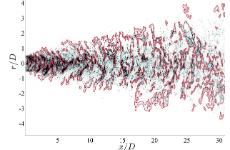
Important applications include the:
- design of particle receivers for solar thermal technologies;
- combustors of pulverised fuel technologies for coal and/or biomass;
- processing of minerals, such as alumina and cement.
The research challenge
All two-phase flow reactors typically transport materials in suspension, with a wide range of particle sizes from sub-microns to sub millimetres under conditions termed “two-way-coupling” in which the flow influences the distribution of particles and the particles influence the flow. Furthermore, the particles tend to “cluster” in regions of the flow that are related to the underling three-dimensional turbulent structure of the flow (Lau & Nathan 2017), such as in regions of high strain and low vorticity.
These characteristics make the flows highly complex and computationally intensive to predict, which means that practical design tools must employ models with simplifying assumptions. This, in turn, requires detailed understanding, together with reliable and detailed measurements for the development and validation of computational models. This is best obtained by the combination of multi-dimensional laser diagnostic measurements and computational fluid dynamics modelling.
What we're doing
The two-phase research group is actively involved in the fundamental research of multi-phase flows and in the development of innovative technologies in collaboration with partners.
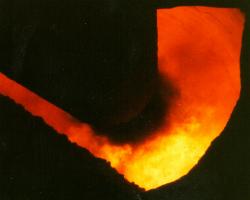
Cement kiln
- particle-laden turbulent jets issuing from various industrial burner nozzles, including precessing and co-annular jets (Birzer et al. 2009; Birzer et al. 2011; Birzer et al. 2012);
- the distribution of velocity and orientation of fibrous particles in both a settling flow and a turbulent jet (Qi et al. 2012; Qi et al. 2013; Qi et al. 2014; Qi et al. 2015);
- well-characterised, particle-laden turbulent jets issuing from a long, round pipe in a co-flow (Lau & Nathan 2013; Lau & Nathan 2014; Lau & Nathan 2016; Lau & Nathan 2017);
- the flow field within particle-laden, directly irradiated solar vortex reactors (Chinnici et al. 2015, 2017);
- heat transfer of radiatively heated particles in conditions relevant to concentrated solar thermal systems.
International collaboration
The CET is also actively engaged with other researchers globally to develop computational models. This includes:
- RANS modelling of a densely-seeded pipe and jet flows (Kartushinsky et al. 2010)
- the development of sub-grid models for Large-Eddy Simulation of particle-laden jets (Jebakumar et al. 2015)
- the validation of low Mach number DNS codes for particle-laden flows.
-
People
Academic and research staff

Dr Timothy Lau
Research AssociateExpertise:
Particle-laden flows, fluid mechanics, turbulence, laser diagnostics.
Professor Gus Nathan
ProfessorExpertise:
Two-phase flows, combustion technology, concentrated solar systems.
Dr Maziar Arjomandi
LecturerExpertise:
Fluid mechanics, heat transfer, hybrid technology development.
Dr Alfonso Chinnici
Research AssociateExpertise:
Computational fluid dynamics, solar thermal systems.
Dr Woei Saw
Research AssociateExpertise:
Solar thermal systems, hybrid technology development.
Dr Zhao Tian
LecturerExpertise:
Computational fluid dynamics, solar hybrid systems. -
Partners & collaborators
The two-phase research group actively collaborates with researchers from across the globe. Current collaborators include:
- Dr Alexander Kartushinsky, Tallin University of Technology, Estonia;
- Professor John Abraham, Purdue University, USA;
- Associate Professor Evatt Hawkes, University of New South Wales, Australia;
- Dr Jim Hinkely, CSIRO;
- Professor Aldo Steinfeld, ETH Zurich;
- Associate Professor Wojceich Lipinski, ANU;
- Dr Jonathan Frank, Sandia National Laboratories.
This work is supported by:
- The Australian Research Council, through the ARC Discovery and Linkage grants schemes;
- ARENA, through its Australia-USA collaborations program and through the Australian Solar Thermal Research Initiative.
-
Facilities & equipment
The research facilities for the study of multi-phase flows include a dedicated and globally-unique laser-laboratory with a wind tunnel, laser diagnostic facilities and particle handling equipment. Key facilities include:
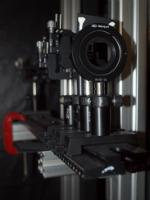
Optical train
- Specialised two-phase flow facilities including particle handling and extraction systems;
- Wind and water tunnels for flow visualisation and fluid mechanics;
- A range of scientific lasers, including pulsed Nd:YAG lasers, a CO2 laser, and a specialised laser developed for the heating of particles;
- Hot-wire anemometry, including post-processing of velocity measurements to obtain derived quantities of turbulence;
- Simultaneous diagnostics, able to couple measurements of temperature, velocity, particle concentration;
- Specialised optics and detectors, such as Intensified CCD cameras and high-speed visualisation;
- Expertise in most current laser techniques, including:
- Particle Image Velocimetry (PIV)
- Laser Doppler Velocimetry (LDV)
- Planar Nephelometry
- Laser Sheet Drop-sizing (LSD)
- Planar Laser Induced Fluorescence (PLIF)
- Two-colour Phosphor Thermometry
- In-house image processing, post-processing and data analysis, including capability to extract derived quantities, such as particle cluster dimensions, from planar measurements.
These facilities have been established with the support of the Australian Research Council.
-
Expertise
The CET has expertise in the following multi-phase fields:
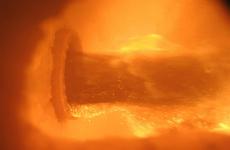
Cement kiln
- Detailed investigation of turbulent particle-laden jets issuing from well characterised jets under conditions of relevance to industrial nozzles used in kilns, furnaces, burners, solar receivers etc. (Lau & Nathan 2013; Lau & Nathan 2014; Lau & Nathan 2016a; Lau & Nathan 2016b);
- Flows utilising fibrous particles, of relevance to applications involving biomass combustion and gasification (Qi et al. 2012; Qi et al. 2013; Qi et al. 2014; Qi et al. 2015);
- Air pollution control, including the mitigation of fine particulate emission;
- Development of practical devices for application in kilns, boilers and furnaces, notably the patented Precessing Jet technology, which is commercially available as the Gyrotherm® kiln burner (Nathan & Manias 1995; Nathan et al. 2006)
- Development of novel particle receivers for the solar thermal energy technologies (http://www.astri.org.au);
- Development and validation of Computational Fluid Dynamics models of particle-laden flows (Jebakumar et al. 2015).
-
Research projects
A Fundamental Study of Well-Characterised Particle-Laden Jets
A long-term programme within the two-phase research group involves the fundamental study of a well-characterised particle-laden turbulent jet issuing from a long, round pipe (see Figure 1).
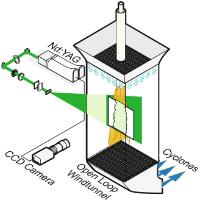
Figure 1: Typical experimental arrangement for current measurements in particle-laden jets (from Birzer et al. 2011)
This experiment was carefully designed to provide well-defined and well-characterised in-flow and boundary conditions to make the experiment well suited to the validation of numerical models as well as to provide new understanding in their own right. For this reason, systematic measurements are performed with a range of mono-dispersed distributions of particles, different pipe dimensions and different flow velocities using measurements with high spatial resolution.
A fundamental study of well-characterised particle-laden jets.
Characterisation of particle clusters within a turbulent flow
One key phenomenon in turbulent two-phase flows is the instantaneous preferential concentration, or clustering, of particles within the flow. This phenomenon is of high relevance as it not only affects the mean and instantaneous two-phase flow, but may also significantly impact chemical reactions and thermal performance in reacting flows. However, the current state of understanding of particle clustering is limited, in large part due to the difficulty in identifying and analysing these clusters. This project involves the detailed study of these clusters within a particle-laden turbulent jet.
The first part of the project is the development of a robust and consistent method to identify and characterise particle clusters. The two-phase research group has developed a novel method to accomplish this by utilising planar measurements of particle concentration (planar nephelometry) in combination with sophisticated image processing techniques (Lau & Nathan 2017).
Characterisation of particle clusters within a turbulent flow.
The study of the flow and heat transfer within a particle-laden solar vortex reactor
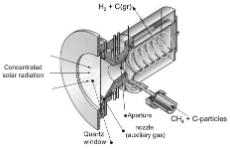
Figure 3: Example of a solar vortex generator (from Hirsch & Steinfeld, International Journal of Hydrogen Energy, 2004).
Concentrated solar thermal (CST) systems are gaining popularity in industrial processes due to their low emissions, high efficiencies, their ability to generate the high temperatures necessary for efficient plant operation, as well as their potential to hybridise with existing conventional thermal plants. While there are a range of different types of CST reactors in existence, one recently proposed configuration utilises solid particles to improve solar radiation absorption (see Figure 3). However, the performance of this configuration is currently limited due to our poor understanding of the two-phase flow within the reactor, and in particular, the phenomenon of particle deposition onto the window of the device, which reduces thermal performance.
This project seeks to develop and optimise the design of solar vortex reactors, with a particular aim of understanding the particle-laden flow within the reactor and reducing particle deposition on the window. This project will involve the study of a range of different configurations of solar vortex reactors through the use of cutting-edge experimental measurements and computational fluid dynamics modelling.
-
Research data
Particle-laden turbulent pipe jet in uniform co-flow
Detailed experiments were conducted on a mono-disperse, particle-laden turbulent jet issuing from a long, vertically mounted pipe, into a weak co-flow. Simultaneous planar measurements of the particle-phase concentration and velocity, as well as measurements of the single-phase (un-laden) jet were conducted whereby the Stokes number was systematically varied from SkD = 0.3 to 22.4.
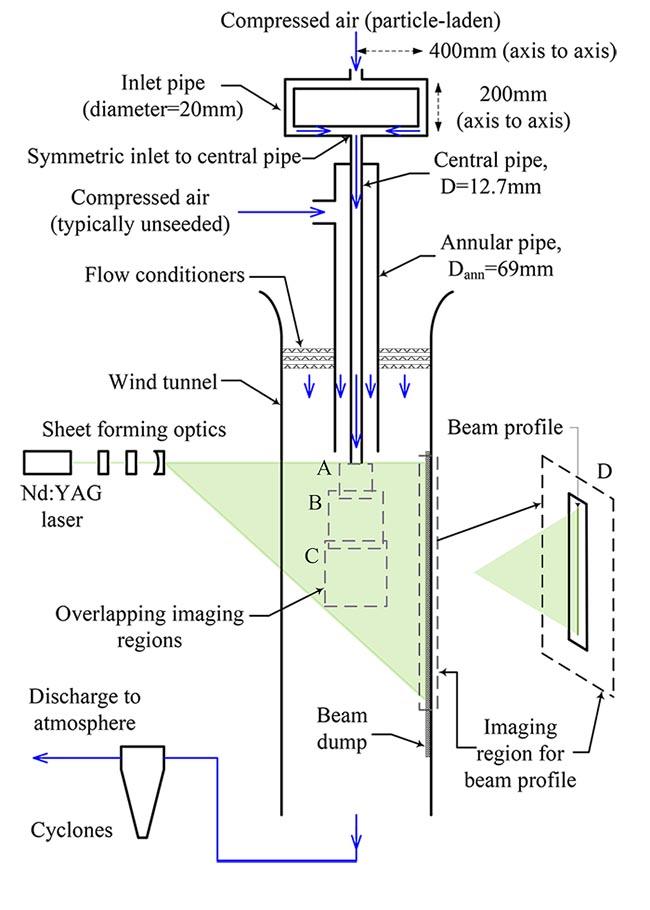
Schematic diagram of particle-laden turbulent pipe jet in weak co-flow.
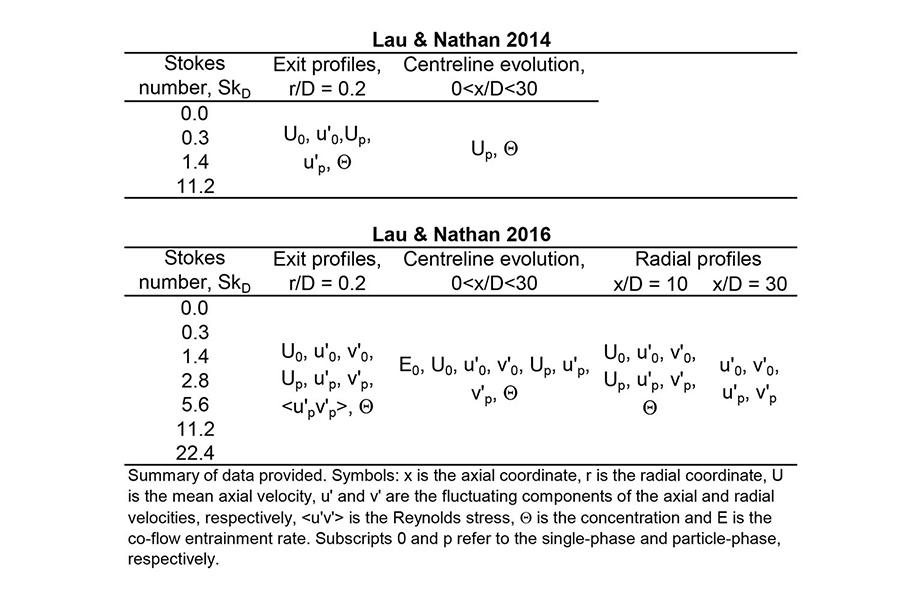
Summary of the data provided
Particle-laden Turbulent Jet (Mean Flow) Lau & Nathan 2014
Key experimental parameters
- Pipe diameter, D = 12.7mm
- Pipe length, L = 2080mm
- Jet Reynolds number, ReD = 10K and 20K
- Jet-to-co-flow velocity ratio = 12.0
- Particle diameter, dp = 10, 20 and 40 micron
- Particle mass loading, Φ = 0.4
- Particle density, ρp = 1200 kg/m3
- Particle Stokes number, SkD = 0.3, 1.4 and 11.2
Key data provided
Simultaneous measurements of particle concentration and particle velocity (mean and r.m.s.) at the pipe exit and along the centreline.
Links
(Lau, T. C. W., & Nathan, G. J. (2014). The influence of Stokes number on the velocity and concentration distributions in particle-laden jets. Journal of Fluid Mechanics 757, 432-457) https://doi.org/10.1017/jfm.2014.496
Full data set, downloadable spreadsheet
Particle-laden Turbulent Jet (Mean and R.M.S.) Lau & Nathan 2016
Key experimental parameters
Pipe diameter, D = 12.7mm
Pipe length, L = 2080mm
Jet Reynolds number, ReD = 10K, 20K and 40K
Jet-to-co-flow velocity ratio = 12.0
Particle diameter, dp = 10, 20 and 40 micron
Particle mass loading, Φ = 0.4
Particle density, ρp = 1200 kg/m3
Particle Stokes number, SkD = 0.3, 1.4, 2.8, 5.6, 11.2 and 22.4Key data provided
Comprehensive dataset consisting of simultaneous measurements of particle concentration and particle velocity (mean and r.m.s.) at the pipe exit, along the centreline and at two axial stations x/D = 10 & x/D = 30
Links
(Lau, T. C. W., & Nathan, G. J. (2016). The effect of Stokes number on particle velocity and concentration distributions in a well-characterised, turbulent, co-flowing two-phase jet. Journal of Fluid Mechanics, 809, 72-110) https://doi.org/10.1017/jfm.2016.666
Full data set, downloadable spreadsheetIf you require further information please see the Contact us section.
-
List of publications
Listed below are the recent publications arising out of the two-phase research group.
Direct links to the published articles (via digital object identifiers, DOIs), or where available, accepted versions of manuscripts, can be found by clicking the hyperlinks below.
Journal articles
- Lau, T. C. W.; Nathan, G. J. (in press); The effect of Stokes number on particle velocity and concentration distributions in a well-characterised, turbulent, co-flowing two-phase jet Journal of Fluid Mechanics
- Lau, T. C. W.; Nathan, G. J. (2016a); A method for identifying and characterising particle clusters in a two-phase turbulent jet Int. J. Multiphase Flow, doi: 10.1016/j.ijmultiphaseflow.2016.10.002
- Cheong, M.; Birzer, C.; Lau, T. C. W.;
Laser Attenuation Correction for Planar Nephelometry Concentration Measurements Experimental Techniques, 2015; 1-9 - Qi, G.; Nathan, G. J.; Lau, T. C. W.
Velocity and orientation distributions of fibrous particles in the near-field of a turbulent jet Powder Technology, 2015; 276:10-17 - Jebakumar, A. S.; Premnath, K. N.; Abraham, J.;
Lattice Boltzmann method simulations of Stokes number effects on particle trajectories in a wall-bounded flow Computers & Fluids, 2015. - Lau, T. C. W.; Nathan, G. J.
Influence of Stokes number on the velocity and concentration distributions in particle-laden jets Journal of Fluid Mechanics, 2014; 757:435-457 - Qi, G. Q.; Nathan, G. J.; Kelso, R. M.; The influence of aspect ratio on distributions of settling velocities and orientations of long fibres Powder Technology, 2014; 257:192-197
- Qi, G. Q.; Nathan, G. J.; Kelso, R. M.; Aerodynamics of long fibres settling in air at 10< Re< 100 Powder Technology, 2013; 235:550-555
- Birzer C. H.; Kalt, P. A. M.; Nathan, G. J.
The influences of particle mass loading on the mean and instantaneous distribution of particles in particle-laden precessing jet flows International Journal of Multiphase Flow, 2012; 41:13-22 - Qi, G. Q.; Nathan, G. J.; Kelso, R. M.; PTV measurement of drag coefficient of fibrous particles with large aspect ratio Powder Technology, 2012; 229:261-269
- Birzer C. H.; Kalt, P. A. M.; Nathan, G. J. A method to provide statistical measures of large-scale instantaneous particle clusters from planar images Experiments in Fluids, 2011; 51:641-656
- Birzer C. H.; Kalt, P. A. M.; Nathan, G. J. The influences of jet precession on large-scale turbulent particle clusters International Journal of Multiphase Flow, 2011; 37:394-402
- Kartushinsky, A.; Michaelides, E. E.; Rudi, Y.; Nathan, G. J.; RANS modelling of a particular turbulent round jet Chemical Engineering Science, 2010; 65:3384-3393
- Foreman, R. J.; Nathan, G. J.; Scaling of the gas phase in particle-laden turbulent axisymmetric jets International Journal of Multiphase Flow, 2009; 35:96-100
- Birzer C. H.; Kalt, P. A. M.; Nathan, G. J. The influence of jet precession on near field particle distributions International Journal of Multiphase Flow, 2009; 35:288-296
- Kalt, P. A. M.; Nathan, G. J. Corrections to facilitate planar-imaging of particle concentration in particle-laden flow using Mie-scattering part 2: Diverging laser sheets Applied Optics, 2007; 46: 7227-7236
- Kalt, P. A. M.; Birzer C. H.; Nathan, G. J. Corrections to facilitate planar-imaging of particle concentration in particle-laden flow using Mie-scattering part 1: Collimated laser sheets Applied Optics, 2007; 46: 5823-5834
- Nathan, G. J.; Mi, J.; Alwahabi, Z.; Newbold, G. R. J; Nobes, D. S. Impacts of a jet’s exit flow pattern on mixing and combustion performances Progress in Energy and Combustion Science, 2006; 32: 496-538
- Smith, N.L.; Nathan, G.J.; Zhang, D.K.; Nobes, D.S.; The significance of particle clustering in pulverised coal flames 29th Symposium (International) on Combustion, 2002
- Smith, N. L., Megalos, N. P., Nathan, G. J., Zhang, D. K., & Smart, J. P.; Precessing jet burners for stable and low NO x pulverised fuel flames—preliminary results from small-scale trials Fuel, 1998, 77: 1013-1016
- Nathan, G. J; Manias, C. G.; The role of process and flame interaction in reducing NOx emissions Combustion Emission Control, 1995; 309-312
Conference papers
- Lau, T. C. W.; Nathan, G. J.; The influence of Stokes number on particle clustering within a two-phase turbulent jet. Proceedings of the 7th Australian Conference on Laser Diagnostics in Fluid Mechanics and Combustion, Melbourne, Australia, 9-11 Dec 2015
- Chinnici, A., Xue, Y., Lau, T. C. W., Arjomandi, M., Nathan, G. J.; Experimental characterisation of the vortex structure within a solar expanding-vortex particle receiver-reactor. Proceedings of the 7th Australian Conference on Laser Diagnostics in Fluid Mechanics and Combustion, Melbourne, Australia, 9-11 Dec 2015
- Saridakis, I. J.; Lau, T. C. W., Djenidi, L.; Nathan, G. J. Monte-Carlo simulations of a Median-filter technique to discriminate between particle and fluid velocity fields Proceedings of the 19th Australasian Fluid Mechanics Conference, 8-11 December 2014, Melbourne
- Nathan, G. J.; Alwahabi, Z.; Dally, B. B.; Medwell, P. R.; Arjomandi, M.; Sun, Z. W.; Lau, T. C. W.; Van Eyk, P. Optics and photonics in solar thermal energy technologies Optical Instrumentation for Energy and Environmental Applications, E2 2014. Optical Society of America (OSA). 25 Nov 2014
- Lau, T. C. W.; Nathan, G. J.; New understanding of the influence of Stokes number on particle-laden jets from simultaneous planar measurements of number density and velocity. Proceedings of the 4th International Conference on Jets, Wakes and Separated Flows, Nagoya, Japan, 17-21 Sep 2013
- Cheong, M.; Birzer, C. H.; Lau, T. C. W. Single-image attenuation corrections to facilitate instantaneous planar imaging of densely seeded particle-laden flows Proceedings: the 7th Australasian Congress on Applied Mechanics (ACAM 7), 9-12 December 2012, Adelaide: pp.808-816
- Cheong, M.; Birzer, C. H.; Lau, T. C. W. Single image corrections to facilitate planar imaging of particle concentration in particle-laden fluids Proceedings of the 18th Australasian Fluid Mechanics Conference, 3-7 Dec 2012, Lauceston, Tasmania, Australia / P. A. Brandner and B. W. Pearce (eds.), 4 p.
- Birzer C. H.; Kalt, P. A. M.; Nathan, G. J. The effect of radial injection on the particle distribution of an initially biased turbulent jet The Australian Combustion Symposium, 2011, The University of Newcastle
- Birzer C. H.; Kalt, P. A. M.; Nathan, G. J. The effect of swirl injection on the particle distribution of an initially biased turbulent jet The Australian Conference on Laser Diagnostics in Fluid Mechanics and Combustion, 2011, The University of New South Wales
- Birzer C. H.; Kalt, P. A. M.; Nathan, G. J. A method to characterise jets using correlations of large-scale features in instantaneous planar images Proceedings of the 17th Australasian Fluid Mechanics Conference, 2010, Auckland
- Birzer C. H.; Kalt, P. A. M.; Nathan, G. J. Towards optimising instantaneous particle clusters in pulverised fuel combustion systems The Australian Combustion Symposium, 2009, Brisbane
- Birzer C. H.; Kalt, P. A. M.; Nathan, G. J. A methodology for measuring particle clustering from planar images 11th International Conference in Multiphase Flows in Industrial, 2008, Palermo, Italy
- Birzer C. H.; Kalt, P. A. M.; Nathan, G. J. A statistical analysis of a technique to measure large-scale particle clusters Fifth Australian Conference on Laser Diagnostics in Fluid Mechanics and Combustion, 2008, The University of Western Australia
- Birzer C. H.; Kalt, P. A. M.; Nathan, G. J.; Smith, N. L. Planar measurements of the distribution of particles in a two-phase precessing jet Fifth Asia-Pacific Conference on Combustion, 2005, The University of Adelaide
- Birzer C. H.; Kalt, P. A. M.; Smith, N. L.; Nathan, G. J. Particle image velocimetry in the near field of a particle-laden precessing jet flow Fourth Australian Conference on Laser Diagnostics in Fluid Mechanics and Combustion, 2005, The University of Adelaide
- Birzer C. H.; Kalt, P. A. M.; Nathan, G. J.; Smith, N. L. The influence of mass loading on particle distributions in the near field of a co-annular jet 5th Australasian Fluid Mechanics Conference, 2004, The University of Sydney
- Nathan, G.J.; Smith, N.L.; Mullinger, P.J.; Smart, J.P.; Performance characteristics of, and an aerodynamic scaling parameter for, a practical PF burner design employing jet excitation to promote particle clustering 5th International Conference on Industrial Furnaces and Boilers (INFUB), 11-14 April 2000, Portugal
- Smith, N.L.; Megalos, N.P.; Nathan, G.J.; Zhang, D.K.; Smart, J.P.; The role of fuel rich clusters in flame stabilisation and NOx emissions reduction with precessing jet PF flames 27th Symposium (International) on Combustion, 1998
-
Contact us
For enquiries regarding data
Dr. Timothy Lau
Centre for Energy Technology
School of Mechanical Engineering,
The University of Adelaide
SA 5005 Australia
timothy.lau@adelaide.edu.au
Phone: +61 8313 3960For enquiries regarding collaborative work
Prof. Graham ‘Gus’ Nathan
Centre for Energy Technology
School of Mechanical Engineering,
The University of Adelaide
SA 5005 Australia
graham.nathan@adelaide.edu.au
Phone: +61 8313 5822
